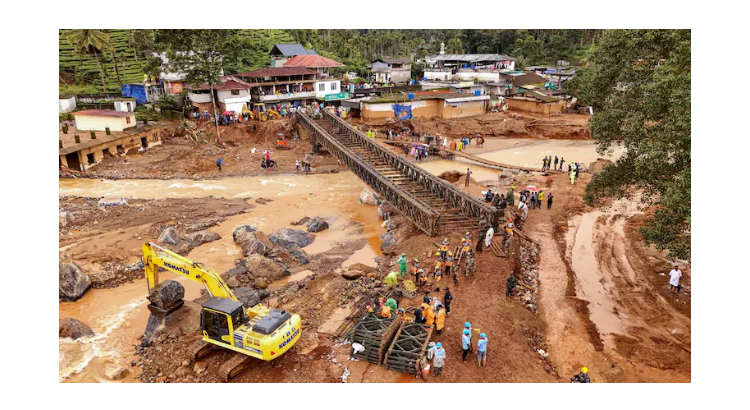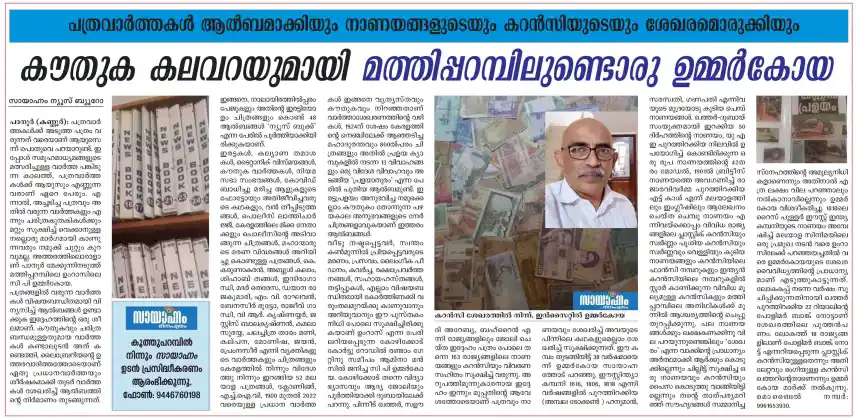Dr.S.G.Biju MD (Hom)

The recent landslide in Wayanad district, Kerala, has left a deep scar on both the landscape and the lives of those affected. This natural disaster, triggered by heavy monsoon rains, resulted in loss of life, displacement, and significant destruction of property. The repercussions of this event extend far beyond the immediate physical damage, affecting the region’s social, economic, medical, and psychological fabric. Let us see the multifaceted impact of the landslide and explores long-term solutions for mental rehabilitation and preventive measures to mitigate future occurrences.
- The Landslide: An Overview The landslide occurred in a remote area of Wayanad, a district known for its hilly terrain and heavy rainfall during the monsoon season. The continuous downpour over several days saturated the soil, leading to a massive landslide that engulfed homes, farmlands, and infrastructure. The sheer force of the slide resulted in the destruction of houses, roads, and bridges, isolating many communities and making rescue operations challenging.
- Long-Term Impact
- Environmental Impact: The landslide has led to significant deforestation, soil erosion, and disruption of the local ecosystem. The loss of vegetation cover has made the region more susceptible to further landslides and floods. Additionally, the sediment carried by the slide has clogged rivers and streams, altering watercourses and affecting aquatic life.
- Economic Impact: The destruction of agricultural land and infrastructure has crippled the local economy. Many families, who rely on farming and tourism, have lost their primary source of income. The rehabilitation and reconstruction process will require substantial financial investment and could take years to complete.
- Medical and Psychological Impact
- Medical Impact: The immediate medical impact of the landslide includes injuries from falling debris, drowning, and hypothermia due to exposure to cold, wet conditions. There is also a risk of waterborne diseases due to contaminated water sources. The disruption of healthcare services and the inaccessibility of medical facilities have exacerbated the situation, leading to delays in treatment and increased mortality. How ever state government did everything in a perfect way with the assistance of all possible support.
- Psychological Impact: The psychological toll of the landslide is profound. Survivors face trauma, anxiety, and depression due to the sudden loss of loved ones, homes, and livelihoods. Children, in particular, are vulnerable to long-term psychological effects, including post-traumatic stress disorder (PTSD). The sense of uncertainty and fear of future landslides further aggravates the mental health crisis in the region.
- Long-Term Solutions for Mental Rehabilitation
- Community-Based Support Systems: Establishing community-based support systems is crucial for mental rehabilitation. Local leaders, healthcare workers, and psychologists should collaborate to provide counselling services, support groups, and mental health awareness programs. These initiatives should focus on building resilience and providing a safe space for individuals to share their experiences and fears.
- Trauma-Informed Care: Healthcare providers should be trained in trauma-informed care to address the specific needs of landslide survivors. This approach recognizes the impact of trauma on an individual’s physical and mental health and emphasizes safety, trustworthiness, and empowerment in the healing process.
- Long-Term Monitoring and Support: Continuous monitoring and support are essential for addressing long-term psychological issues. Regular follow-ups, mental health screenings, and intervention programs should be implemented to ensure that survivors receive the care they need over time.
- Precautionary Measures to Prevent Future Landslides
- Sustainable Land Use Planning: One of the primary causes of landslides is unsustainable land use, including deforestation, unplanned construction, and agricultural practices that destabilize slopes. Implementing strict land use regulations and promoting sustainable farming and construction practices can help reduce the risk of landslides.
- Early Warning Systems: The installation of advanced early warning systems is essential for predicting landslides and issuing timely alerts. These systems should include real-time monitoring of rainfall, soil moisture, and slope stability, allowing authorities to evacuate vulnerable communities before a disaster occurs.
- Afforestation and Soil Conservation: Reforestation of deforested areas and the promotion of soil conservation techniques can stabilize slopes and prevent landslides. Planting deep-rooted trees and shrubs can help bind the soil, reducing erosion and enhancing the area’s resilience to heavy rainfall.
- Community Education and Awareness: Educating local communities about the risks of landslides and the importance of precautionary measures is vital for disaster preparedness. Public awareness campaigns, workshops, and training programs can equip residents with the knowledge and skills needed to respond effectively in the event of a landslide.

The landslide in Wayanad has brought to light the vulnerabilities of hilly regions during the monsoon season. While the immediate impact has been devastating, the long-term consequences could be even more severe if not addressed comprehensively. By implementing sustainable land use practices, enhancing early warning systems, and providing long-term mental health support, we can mitigate the impact of future landslides and help affected communities recover and rebuild. The lessons learned from this tragedy should guide future efforts to ensure that such disasters are prevented and that survivors receive the care and support they need to heal and move forward.
Dr.S.G.Biju MD (Hom), Chief Medical officer HMS Hospital Changancherry.
![]()











Leave a Reply